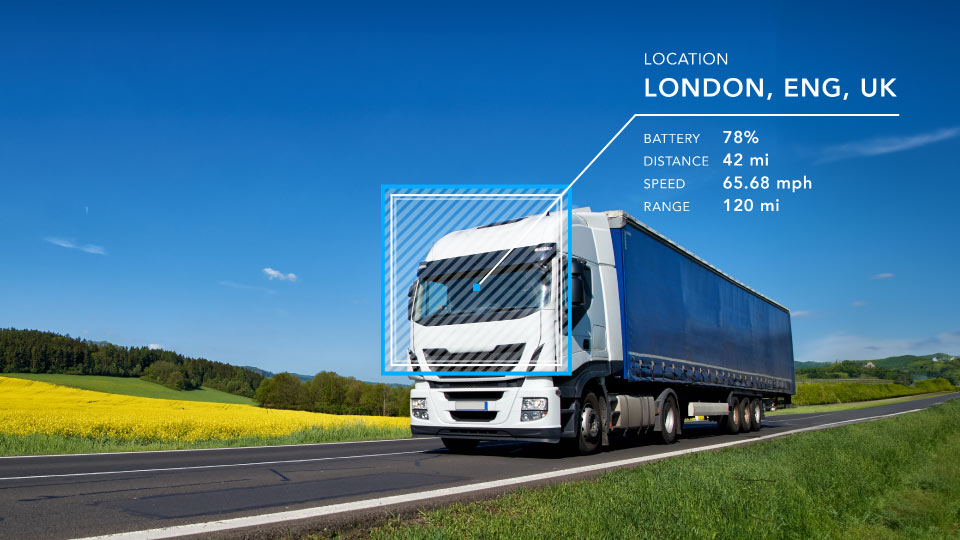They’re EVerywhere: how to find your best fit in the EV market
Electric vehicles aren’t what they used to be, neither are the considerations for embedding them within your fleet.
By Geotab Team
Dec 16, 2021
Updated: Dec 20, 2021

Anyone with even a passing interest in electric vehicles (EVs) over the last few years will be well aware of how quickly the EV market is developing. Drivers and manufacturers are becoming more interested in EV infrastructure, fleet electrification, and the EV industry in general.
Not too long ago, your options for a battery-electric passenger car were limited. A small range of models were offered, either from EV-focused start-ups, or as a secondary option from established manufacturers. The situation for commercial vehicles was no better, with the choices being largely conventional vehicle bodies expensively retrofitted with electric powertrains.
The EV market today
The situation is very different today: new electric vehicles now sit at the centre of manufacturers’ strategies and marketing, and only a few vehicle manufacturers have not announced roadmaps to going fully electric. What’s more, electric vehicles are more affordable and competent than ever, as designers and engineers focus on building EV-specific platforms, and economies of scale kick in.
For fleet managers, it is perhaps an interesting shift. Once, many businesses would have been locked out of electrification simply by a lack of appropriate electric options. Now, just getting to grips with the range of options available is a task in itself. Plus, with new options coming to market all the time, there can often be a fear that acting too soon will mean missing out on the ideal solution.
EValuating the market
Conventional vehicle fleet operators who are interested in fleet electrification will need to consider a few key differences.
One distinction is that, in the EV space, new manufacturers are challenging the traditional industry leaders in a way that hasn’t happened with conventional vehicles for a long time. Most famously, of course, is Tesla, which is now also by some distance the world’s most valuable manufacturer.
Alongside it, companies like Rivian, Arrival, Nikola, and BYD are taking electric-first approaches to make a dent in the automotive industry. Meanwhile, however, traditional giants of the commercial vehicle sector like Mercedes, Ford, and Volvo are now producing EV options for a range of use cases, from 3.2-tonne panel vans to 44-tonne haulage trucks.
One common difference in how new and established manufacturers approach EVs is whether they present their EV options as like-for-like replacements to conventional vehicles. Ford's forthcoming e-Transit, for example, will be familiar to those who drive an ICE Transit, while Arrival’s van aims to reimagine how the vehicle is used. More broadly, however, the switch to EVs is an opportunity to reconsider what ‘best fit’ looks like for a fleet; if, for example, changes in the market mean that a business is making more, shorter delivery journeys, aiming to buy EVs with equivalent capabilities to existing vehicles might not be right.
Electrifying wherEVer possible
Ultimately, of course, not every use case will (yet) be covered by the EV options currently on the market.
Batteries are different to the fuel tanks they effectively replace. They are significantly larger and heavier, which makes electrifying heavy-duty vehicles more challenging. They are also more efficient at supplying power and turning it into motion, which presents real advantages for stop-start duty cycles.
The move to electric really will be a transition, in that many fleets will spend a period operating electric and conventional vehicles alongside one another. Smart management solutions, such as MyGeotab, make it easy to work with these vehicles side-by-side as the move to electric takes place.
Now is the time, however, to start thinking about the dynamics of the new EV market. As the automotive industry moves away from fossil fuels, there are more EV solutions for fleet operators. By thinking about how well your current vehicles meet your needs, what your perfect fleet might look like and how you can prepare for the future of your business, you can whittle down the vast range of options to find your best fit in the EV market today.
For more guidance on how to think about making the move to electric, download
Geotab's Ultimate Guide to Fleet Electrification
now.
Subscribe to the Geotab Blog
The Geotab Team write about company news.
Subscribe to the Geotab Blog
Related posts

Geotab’s new fleet Sustainability Center simplifies fuel and emissions reduction
June 13, 2025
3 minute read
.jpg)
Lead with Trust: How Geotab Helps Businesses Navigate CSRD Compliance
March 19, 2025
2 minute read

2030 or 2035, the UK Needs Meaningful Action on EVs Now
September 6, 2024
2 minute read

Driving smarter: Insights from Geotab’s “Taking Charge” Report
August 8, 2024
2 minute read

The art of the possible: Insights from Geotab’s “Taking Charge” Report
June 20, 2024
3 minute read

